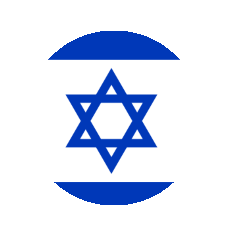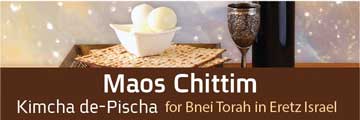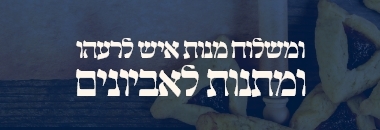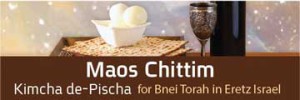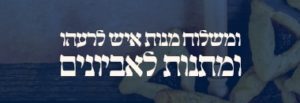This week’s parashah, Parashas Bechukosai, mentions the concept of a cherem in the context of a dedication to Hashem. As Rashi notes, the Sages dispute the status of something that is dedicated, where the object of the dedication is unspecified. According to one opinion, the dedicated item is given to the Kohanim; according to another, it goes to the Temple itself.
In common usage, however, the term cherem refers not to a dedication, but rather to a ban, or excommunication. The two meanings are certainly related: Just as something dedicated to Hashem is by definition separated from our regular mundane (chulin) lives, so a person who is excommunicated is separated from the community. In practice, however, the connotation is quite different.
We find in Scripture that the concept of a cherem can actually imply punishment by death (see Shmos 22:19). In the language of Chazal and in modern usage, a cherem does not imply physical death, but it can perhaps be described as social or spiritual death. Indeed, Chazal write that the word shamta (Aramaic for excommunication) derives from the words sham misah – “there death is found” – and the mourning practices that the excommunicated person must follow (such as the prohibitions on washing and on haircuts) suggest that he must mourn his own death.
In this and in the following article we will, please G-d, discuss the nature of the ban and its laws. For which issues is this penalty applied? What defines a halachic ban, and what are its effects? How and by whom is the ban issued, and how is it lifted? This week’s article will give an overview of the use of the halachic ban and its general nature.
Be’eizer Hashem, next week’s article will detail practical examples of the halachic ban (for instance, the famous bans issued by Rabbeinu Gershom), and show how the issue is relevant nowadays.
The Honor of the Sages
It is worth outlining the general use of the ban over the generations, and in particular in the times of Chazal.
In numerous sources, we find that the ban was used primarily as an internal community sanction. In the words of the Sefer Chasidim (No. 1386), “In our times there is no sanction among Israel other than the oath and the ban.” In the times of the Mishnah and the Talmud, and more so in later generations, the jurisdiction of Torah authorities was very limited, and the strongest sanction they had was the rabbinic ban.
One of the most common matters for which the ban was used is to protect the honor and the authority of the Sages. This use of the ban in this context is mentioned by Rabbi Yehoshua ben Levi (Berachos 19a): “In twenty-four places Beis Din excommunicate for the honor of the Sages.” As the Gemara writes, the ban takes on special stringency in punishing those who show scorn and disrespect towards the Sages – a principle that is likewise noted by the Shulchan Aruch (Yoreh De’ah 334:43).
Similarly, during the Tanaic period the ban was used to guard the authority of the leadership, and to ensure that halachic decisions were respected. The most prominent example is the renowned case of tanur shel achna’i (Bava Metzia 59b), in which Raban Gamliel excommunicated Rabbi Eliezer for his refusal to accept the majority opinion of the Sages.
The Gemara narrates how the ban caused Rabbi Eliezer much anguish. Raban Gamliel, when he later traveled at sea, found his life endangered by a fierce storm. Understanding that he was experiencing this danger on account of the suffering the ban had inflicted upon Rabbi Eliezer, Raban Gamliel turned to Heaven and declared: “Master of the world, it is known before You that I did not act for my own glory… but for Yours – that there should not be many disputes among Israel.”
Chazal see the preservation of the Sages’ honor, and the uniformity of halachic decision, as ideas that are foundational to Torah practice. Even Rabbi Akavia ben Mehalalel, who was a candidate for the leading position of Av Beis Din, was placed into excommunication for his dispute against the Sages (Mishnah, Eduyos 5:6). In this way, the ban protects the stability of halachah.
Excommunication for Halachic Transgression
Chazal record several instances where bans were used as sanctions against sinners.
Rav Achai excommunicated somebody who went fishing on Shabbos (Kiddushin 72b), and Rav Yosef excommunicated a fellow sage who travelled on the second day of Yom Tov (Pesachim 52a). The Gemara adds a general ruling whereby anybody who desecrates the sanctity of the second day of Yom Tov should be placed into excommunication. Elsewhere it mentions that the same applies to one who labors on the eve of Pesach. The Talmud recounts other instances where bans were enacted in reaction to particular sins.
Though bans had other purposes as well, the Talmudic examples of bans indicate that the sanction was used especially to deter sins that involve damage to halachic practice in society.
With this in mind, we can understand the ruling of the Ran, who discussed which sins the punishment of excommunication should be applied to. The Ran (Pesachim 50a) explains that a ban should be applied to transgressions of rabbinic nature, but not to Torah transgressions. Rabbinic transgressions, though in themselves less severe than Torah transgressions, carry a greater threat to religious practice of society as a whole. In questions of Torah law, the Sages were less concerned that transgression would influence the sinner’s surroundings.
The Meiri notes that the distinction is not universal, and the Maharam (cited in Tosafos, Yevamos 52b) notes the general principle, namely: “Everything depends on the needs of the hour, and the judge has the discretion to change from one case to another.” Yet in the majority of cases, the distinction of the Ran is correct.
We also find that Chazal made use of excommunication for sins that have a public nature. One who says the Name of Hashem in vain (Nedarim 7b), one who plants kilayim (Kiddushin 39a), and one who betroths a woman within three months of her divorce (Yevamos 37a), are all singled out for excommunication. The public nature of these sins threatens the “purity of the public domain,” and it is fitting to treat them with special severity.
What is a Cherem?
The basic concept of a cherem is the separation of the excommunicated party from the community. One source (Yerushalmi, Mo’ed Katan 2b) bases the idea on the words of the verse in Ezra (10:8): “Anyone who will fail to appear within three days will forfeit all his property… and will himself be expelled from the assembly of the exiles.”
It is forbidden for anybody to enter within four cubits of the excommunicated person (based on Bava Metzia 59b), and the person in cherem must follow the laws of mourning on account of his social death.
Yet, excommunication does not imply the total banishment of the person from society. The Mishnah (Midos 2:2) notes that there was a separate entrance to the Temple Mount for those in excommunication, indicating that the party would be separate but not banished from the Temple Mount. Entry into the Sanctuary (azarah) was prohibited (Berachos 19b), but not entry into the Temple Mount.
One of the most severe consequences of excommunication is the banning of the person from the beis midrash. As we find in Maseches Semachos (5:14), a person under ban may not teach and he is not taught. However, he may study on his own, “so that he should not forget his learning.” The observance of mourning by somebody under a ban is thus not complete, for he may study Torah, yet he cannot enter the communal study hall.
In certain cases, the cherem closes many doors besides those of the beis midrash. One enactment, which was made in the sixteenth century, decrees that somebody who transgresses will be excommunicated from “both worlds,” separated from “all holiness of Israel,” “his bread is the bread of a non-Jew, and his wine forbidden,” and his burial should be “the burial of an ass.” It was prohibited for any rabbi to officiate at his or his children’s weddings, and “he should be cursed with all the curses written in the Torah and the curses of Elisha upon Gechazi” (the full text is cited in Pinkas Va’ad Arba Aratzos, p. 1).
Further details of the laws of somebody placed in cherem will be discussed in the forthcoming article.
The Power of the Cherem
Does the halachic ban carry the weight of Torah law, or it is only a rabbinic enactment? The Ramban discusses this question at length in his Mishpat Ha-Cherem, where he concludes that it is rabbinic, since it is derived from a verse in Shoftim (5:23; the cherem is thus mi-divrei kabbalah) rather than a Torah verse.
The Ramban notes that one cannot explain that the idea of a ban is based upon the laws of Torah vows, for this would leave us without an explanation of how a person is released from the cherem, despite the lack of a petach or charatah (regret) as is necessary in the case of vows. The Ramban writes that a ban is unrelated to other Torah laws, and it is rather, “Beis din declaring a ban for some reason, stating that anybody who does such and such, and anybody who breaks the boundary on a particular issue, should be in cherem.”
Based on his definition, the Ramban explains that there are four matters for which the ban will be more stringent than regular vows: (1) It does not have to be stated explicitly; (2) It applies against a person’s will, and in his absence; (3) One who transgresses it is separated from the community, as the way of a niduy (excommunication) and worse; (4) The ban can involve the death penalty (when proclaimed by the King).
Conversely, in matters of releasing a person from a ban, the cherem is more lenient than vows and oaths.
Doubtful Cherem
Not all authorities agree with the Ramban concerning the status of the halachic ban. According to the Terumas Ha-Deshen (281), the ban is a Torah law, and this is also asserted by the Noda Biyhuda (Even Ha-Ezer 77) concerning the bans of Rabbeinu Gershom. Elsewhere, however, the Noda Biyhuda (Yoreh De’ah 146) states that the cherem is only of rabbinic origin, citing the above Ramban.
Based on this assertion, the Noda Biyhuda writes that in cases of doubt – meaning, in cases where there is a doubt as to whether a ban should apply or not – one can be lenient.
The Sedei Chemed (Ches, Kelal 42) writes at length concerning the status of a cherem, and concludes that even if we are stringent concerning doubts about a cherem, this will apply only to doubt concerning whether a ban should be applied or not. The actual halahchos of the ban (how the banned party must act and be treated) are certainly rabbinic, and we are certainly lenient concerning doubts as to such practices.
In the next article we will discuss the particular halachos of bans in more detail, and deal in particular with the bans enacted by Rabbeinu Gershom.

